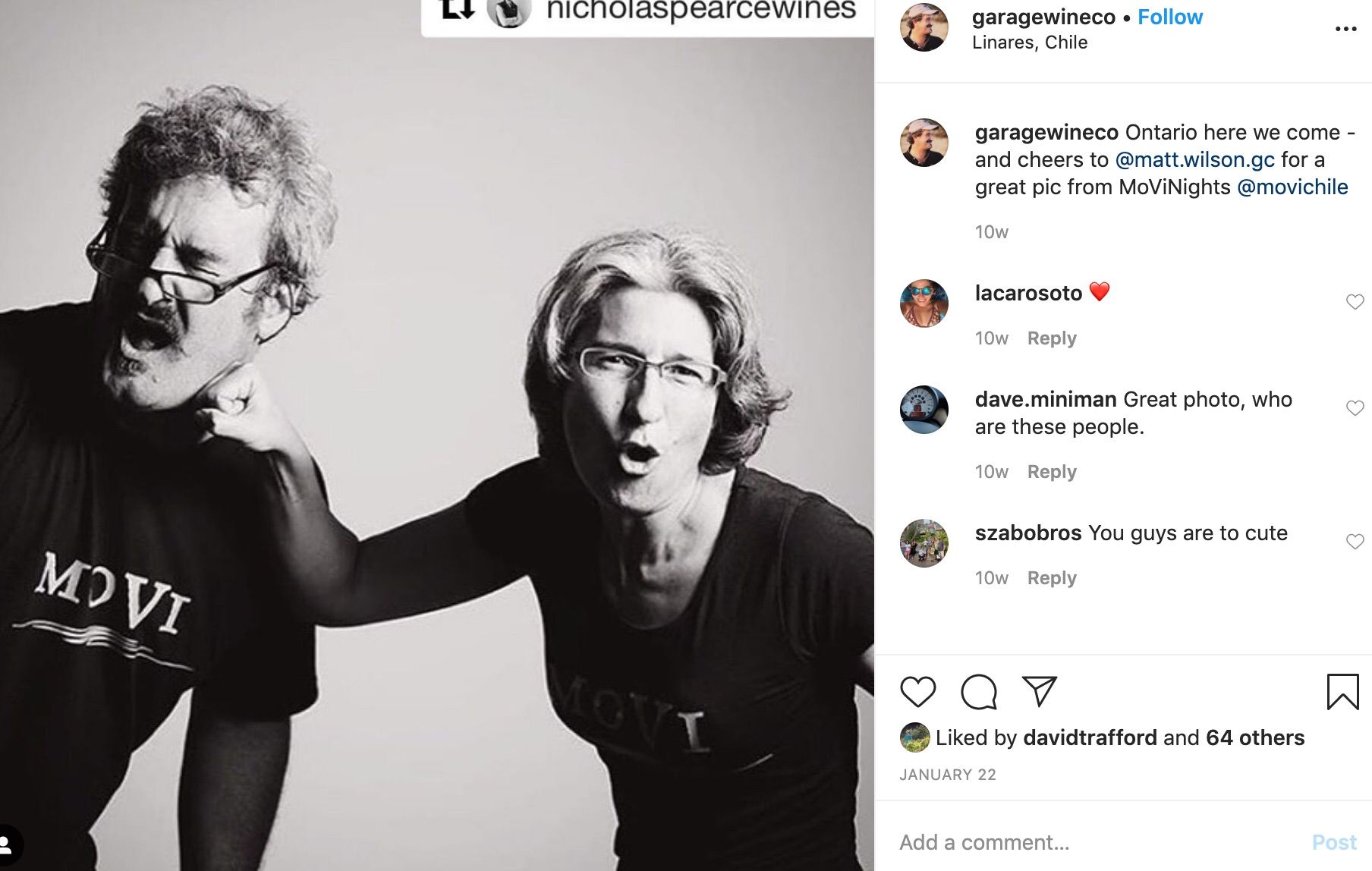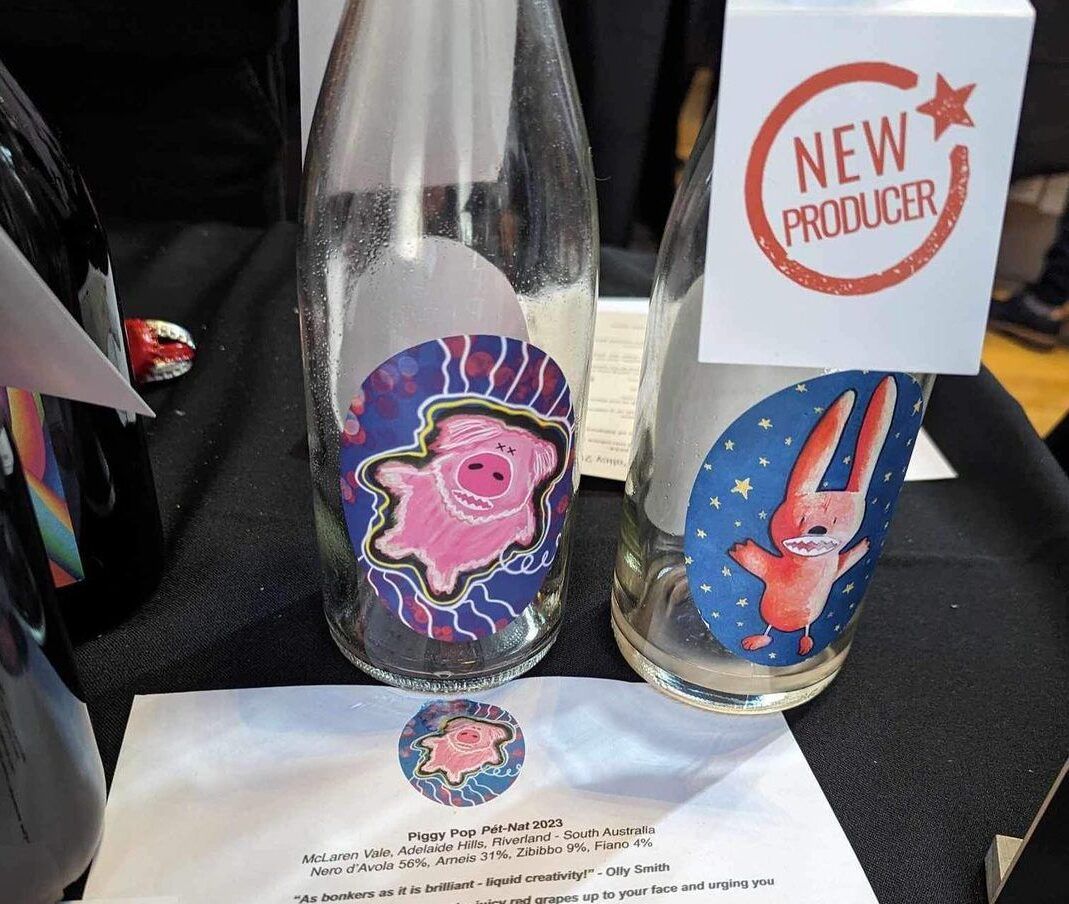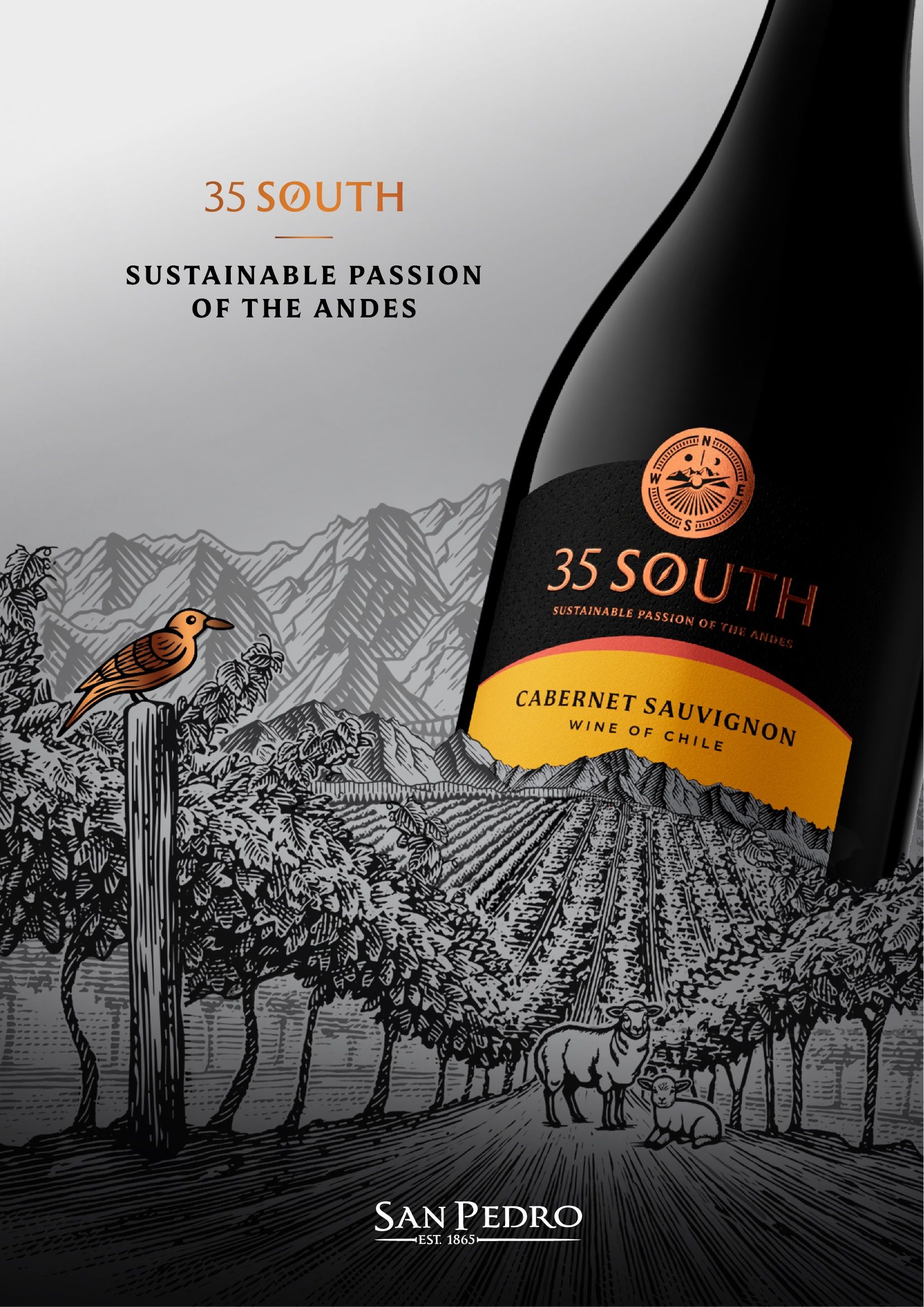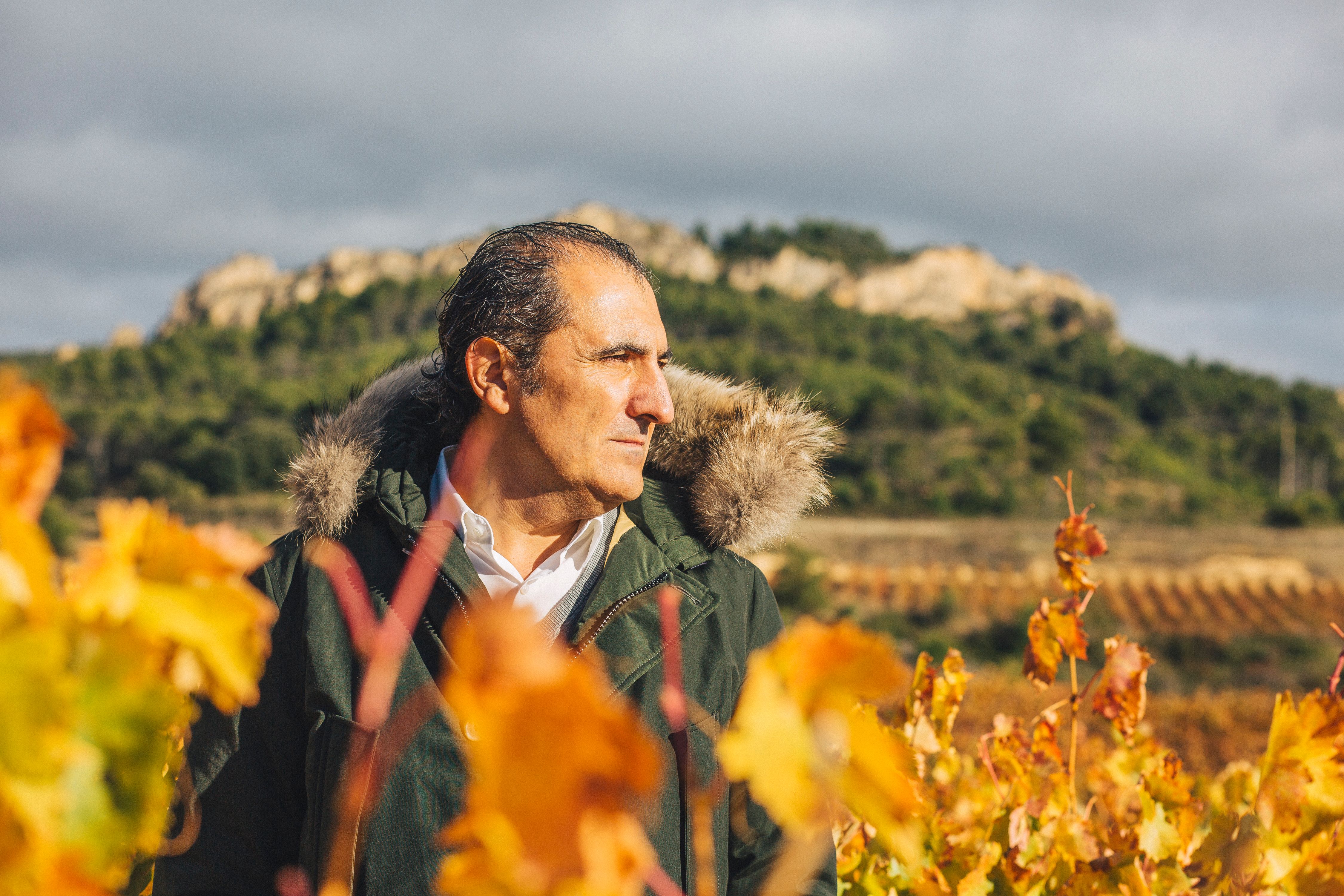Derek Mossman uses traditional winemaking methods to make what he calls “coveted” and low intervention wines under his Garage Wine Company label from vineyards in Chile’s Maule and Itata regions. But it’s his personality and charisma that really shines through when he tells the stories of his wines and vineyards on social media (main picture by Matt Wilson).
You have now built a large following on social media, particularly Instagram, which must be pleasing to know so many people have invested time in what you are doing?
It’s terrific to know people are interested in what goes into a bottle of GWCo wine. We have a lot of people into wine, as well as trade folks, following the work on the farms up close through the year. It is great to communicate more directly and honestly – without the pretence of ‘post-production’.
And you are right, we didn’t sell 5,000 cases last year, but we are growing and we did produce more than 5,000, so we shall be passing that 5k threshold too after a little more time in the bottle.

Derek Mossman now has over 5,234 (and rising) followers on Instagram enjoying the stories he tells
Did you mark the occasion?
Certainly, Pilar (my wife) promised me an ice cream. It is important to have metrics – and decent chocolate mint.
Who takes the pictures?
Just me on an iPhone for the most part, but I have a battered GoPro and sometimes those videos get uploaded too. We are trying to make a documentary about reviving the farms (with photographer Matt Wilson @matt.wilson.gc ) I am mostly shooting complementary sequences. Out–shots I think Matt calls them to help stitch things together.
We have worked hard with a select few in the community re-thinking how to do the farming best and this has me there when the work starts first thing in the morning. I see things that I just cannot resist capturing and like to get down on my belly to get a plough passing up close and that sort of thing. The people working think I am nuts, but working with them like this elbow to elbow as we say in Spanish you develop a rapport — that rapport is the picture.
There are sounds too. Have you heard the sound in some of the videos? The way they whistle working with the horses is a veritable soundtrack.
How have you built your Instagram following to over ?
It is just a number I guess, but 5,000 followers are spread over most of the 14 countries where we ship. Many are in the UK, US andSweden but also Thailand, Poland, Holland and various other “lands” that are escaping me right now.Many of the people looking at the pics have a glass of ours in hand or they sell our juice, so the pictures help them understand what we are doing and more important why we do it. There is a vicarious quality about following along when you are up close and things are unpolished. It turns out grit and is more engaging than fluff.

Most of the shots on Mossman’s Instagram are him getting his hands dirty
5,000 cases of 9 litres is 45,000 litres which would be 60,000 bottles or about 95-100,000 kilos of fruit harvested. Dry-farming without irrigation in Maule or Itata with say (3 – 5 bunches of 180 – 350 grams each would be) 1.2 – 1.8 kgs per plant and with 3,500-4,200 plants on a hectare of old vines that would have us farming about 23 or 24 hectares in total.
This is where it gets complicated. These hectares are not all together in one place. We work small parcels reviving old vineyards in more than a dozen locals in Maule and Itata, with regenerative agriculture. Proper farming, that borrows from both new and old, makes for a healthier vineyard and wine— and community and planet while we are at it! Each of our parcels [12 of them!] is bottled separately. These are the painted / silk-screened bottles. And then we make three Single Ferments Series wines which are co-fermented fruit from more than one vineyard.
Wait: 12 plus sites to make less than 5,000 cases? How the devil did you ever find your way to doing that?
We did not set out to make small lots. We began in the Maipo – in the comfort zone, happy to buy well-known fruit, but twice when we made a crackerjack wine, we were told that the fruit was no longer available to us the following harvest.

We had simply gotten the vineyard recognised and talked about, and the owners felt we had upstaged them. We insisted we should continue, and what is more put the vineyard name on everyone’s bottles (like Bien Nacido in California) but we were politely told, no thank-you.
We went to the Maule because we were frustrated with this status quo thinking. We went looking for unrecognised or under-appreciated fruit where we could work with smaller more humble growers and work together. We never imagined that smaller meant vineyards of one to two hectares taken care of by ploughmen farmers. Most did not have any D.O. paperwork for their Carignan, none had sold fruit for export wine. It was an experience – and then some. These families have been custodians of the dry-farmed Secano Interior for many years.
Today, we farm for more than just what we bottle. We sell fruit to others. We gained a reputation for polishing old-vine gems so now we started doing it for others as well.

This is not done just for the cameras…Mossman works with his growers in the same way they do
And have you acquired any of these properties?
It is a long process, and there is nothing finalised yet, but today we have more than 40% of the acreage rented long-term. Renting guarantees the families a monthly income and we arm a team, a posse of people in the community to get the work done. In this way the younger generation can learn working next to the old hands. Pruning for example is like divining or water, it takes years to learn and we are bringing younger people up to do it well.
It sounds like a treasure hunt: what have you discovered lately?
We have just released our first Fieldcraft Bottling. It is a Semillon from the Isidore Vineyard (Isidore the patron Saint of the labourer who tends to the vines) and Bibendum Wine in the UK was the first of our importers to pick it up.
And what is a Fieldcraft bottling?
In essence it is about making a wine that would not normally get made. It could be a vineyard that is too far off the beaten track, or that would not fill a truck, or has no paperwork – so it is passed over and sold for bulk. In today’s world buyers want more for less and they would have the small modernise: spray instead of cultivate, scale instead of focus, above all reduce the cost of labour – and it’s in the very labour where you find the wisdom passed down through the ages: the fieldcraft is what we have come to call it. I know, any sane person would say 15 wines was enough (some of our importers go a bit crazy), but when we see a diamond in the rough we continue polishing!
You take a similar approach to your Instagram posts. You certainly don’t seem to “polish” your pictures – there is a certain grungy element to your images online?
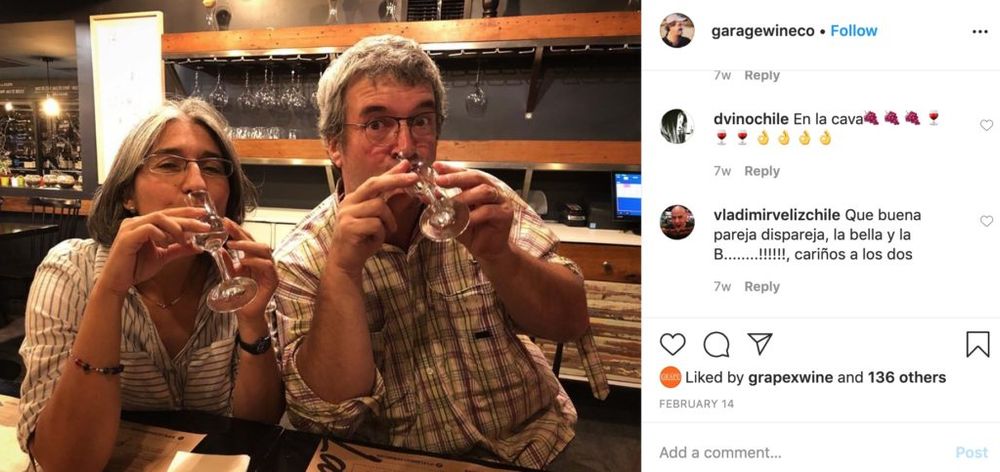
Just as they are… Derek and Pilar…
Most wine pictures are taken when everything is done and perfect. It’s much more interesting to show the doing. A wise man once told me there is nothing to talk about until there is something in the bottle. He was right, but in the meantime you can show the making of in pictures!
You don’t go for pushing out scores you have got for your wines or critics tasting notes?
That isn’t our style. It just seems trite. Yes, the wines are well–recognised, but we would sooner let others point that out. It means more coming from them. And we do repost sometimes. I am Canadian originally, I’d have to apologise each time for such wanton displays of “look at me”.
Can social mediamake a difference for a small company?
I think if social media can split what were the two most successful democracies in the world, it can certainly have an effect on a small wine company. I am reminded when someone who questioned biodynamics asked how the moon can affect a vine? The answer was that if the moon can cause the tides and avalanches surely plants in a vineyard was light work.
Direct communication with thousands of our customers all over the world (not to mention our trade partners) is huge. Many of them comment, some are wise asses (some brilliant, some drôle) but I think everyone experiences something genuine albeit vicariously. It is simply more interesting to stick a GoPro camera in a picking basket and let it travel across a vineyard to the truck capturing people at work than to airbrush the perfect landscape. Showing the underbelly of real wine made naturally is a lot more interesting than buffed models or points and medals.
After our bushfires in 2017 when most chose not to publish disparaging images we demonstrated making the Phoenix Ferment (born of the ashes). I am sure that wine, our first white (Blanco de Tinto) would never have been picked up as it was in UK and other countries if we had not shown the making of online.
How do you measure the effectiveness of your social media? Do you analyse what people like/ don’t like and adapt what you do?
In a word: no. We work with intuition and by the seat of our pants, just like we do when we make wine. It is great to make contact with wine bars known and new to us and we like when people comment and shout out about the wines, but we do not measure in statistical terms.
So what is the most successful approach on Instagram?
Heaps of serendipity. I think viewers can smell planning and production and it is a turn-off.
But some of your shots are so well put together.
Those would be Matt Wilson’s genius. Everyone who knows his work know that he is an absolute nutter who could create rapport with a penguin in the Sahara. It is so well produced that the production disappears, but that is a photography pro at work.
How about advice to other wine companies out there on how to do social media well?
I do not pretend to have answers, and I do not give advice about winemaking or media or anything. Well, I do have two bits of advice that I give on occasion. “Don’t wait until you are 30 to buy a pickup truck and, and don’t wait until you are 40 to buy a tractor.“ But that is life advice.

“Proper farming is not monoculture..”
Do you do Twitter as well? Is that a different approach.
I send from Instagram to both Twitter and Facebook — someone set it up with IFTTT (if this then that) and it seems to work. Two less things to do.
I wish we did not have to use Facebook and Instagram. I think they are products of an irresponsible company out of control in need of regulation and corporate responsibility, but they are the tools of the day. And tools are for the Davids as well as the Goliaths.
How has all of this affected your business
In the UK I think it is fair to say that sharing our works as it were helped to get Bibendum to bring in wines that they might not have otherwise. The Phoenix Fermentand more recently the Semillon from Isidore Vineyard for instance, or even more recently a Carignan called Vigno into their fine wine department for collectors and select on-trade.
In the US, I would say that it is a crucial part of the reason we are able to change the way we work. We are no longer working with a central importer, but rather selling into state by state with more direct attention and communication. The reason we are able to do this is because we have had direct contact and communication with somms and indies sharing our works for years through pictures, incited at least, online.
Finally, your wines are natural and yet do not use that moniker. In a word what kind of wines do you make?
Coveted. This is the only kind of wine that can command the price to allow us to go out and do it all again next year!
